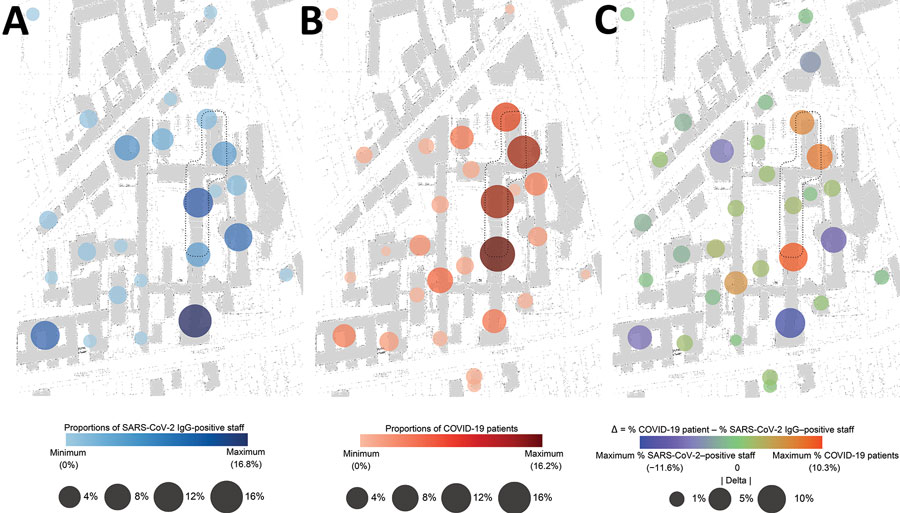Infection Control Measures and Prevalence of SARS-CoV-2 IgG among 4,554 University Hospital Employees, Munich, Germany
Johanna Erber, Verena Kappler, Bernhard Haller, Hrvoje Mijočević, Ana Galhoz, Clarissa Prazeres da Costa, Friedemann Gebhardt, Natalia Graf, Dieter Hoffmann, Markus Thaler, Elke Lorenz, Hedwig Roggendorf, Florian Kohlmayer, Andreas Henkel, Michael P. Menden, Jürgen Ruland, Christoph D. Spinner, Ulrike Protzer
1, Percy Knolle
1, Paul Lingor
1
, and
on behalf of the SeCoMRI Study Group2
Author affiliations: University Hospital rechts der Isar, Munich, Germany (J. Erber, V. Kappler, B. Haller, H. Mijočević, C. Prazeres da Costa, F. Gebhardt, N. Graf, D. Hoffmann, M. Thaler, H. Roggendorf, F. Kohlmayer, A. Henkel, J. Ruland, C.D. Spinner, U. Protzer, P. Knolle, P. Lingor); German Center for Infection Research, Munich (J. Erber, D. Hoffmann, J. Ruland, U. Protzer, C.D. Spinner); Helmholtz Zentrum München-German, Neuherberg, Germany (A. Galhoz, M.P. Menden); Ludwig-Maximilians University Munich, Martinsried, Germany (A. Galhoz, M.P. Menden); German Center for Diabetes Research, Neuherberg (M.P. Menden); Technical University of Munich, Munich (M.P. Menden)
Main Article
Figure 3

Figure 3. Spatiotemporal trajectories of severe acute respiratory syndrome coronavirus 2‒infected patients and staff mobility in university hospital, Munich, Germany. A) Cumulative representation of proportions of seropositive staff. B) Cumulative representation of proportions of COVID-19-patients. C) Differences (Δ) for staff and patients between different hospital areas. Difference are indicated by dot plots and assigned to distinct hospital areas. For purposes of discretion of data from study participants, the graphic representation of spatial information is partially distorted. Dashed lines indicate COVID-19‒designated areas in the hospital.
Main Article
Page created: December 15, 2021
Page updated: February 21, 2022
Page reviewed: February 21, 2022
The conclusions, findings, and opinions expressed by authors contributing to this journal do not necessarily reflect the official position of the U.S. Department of Health and Human Services, the Public Health Service, the Centers for Disease Control and Prevention, or the authors' affiliated institutions. Use of trade names is for identification only and does not imply endorsement by any of the groups named above.
